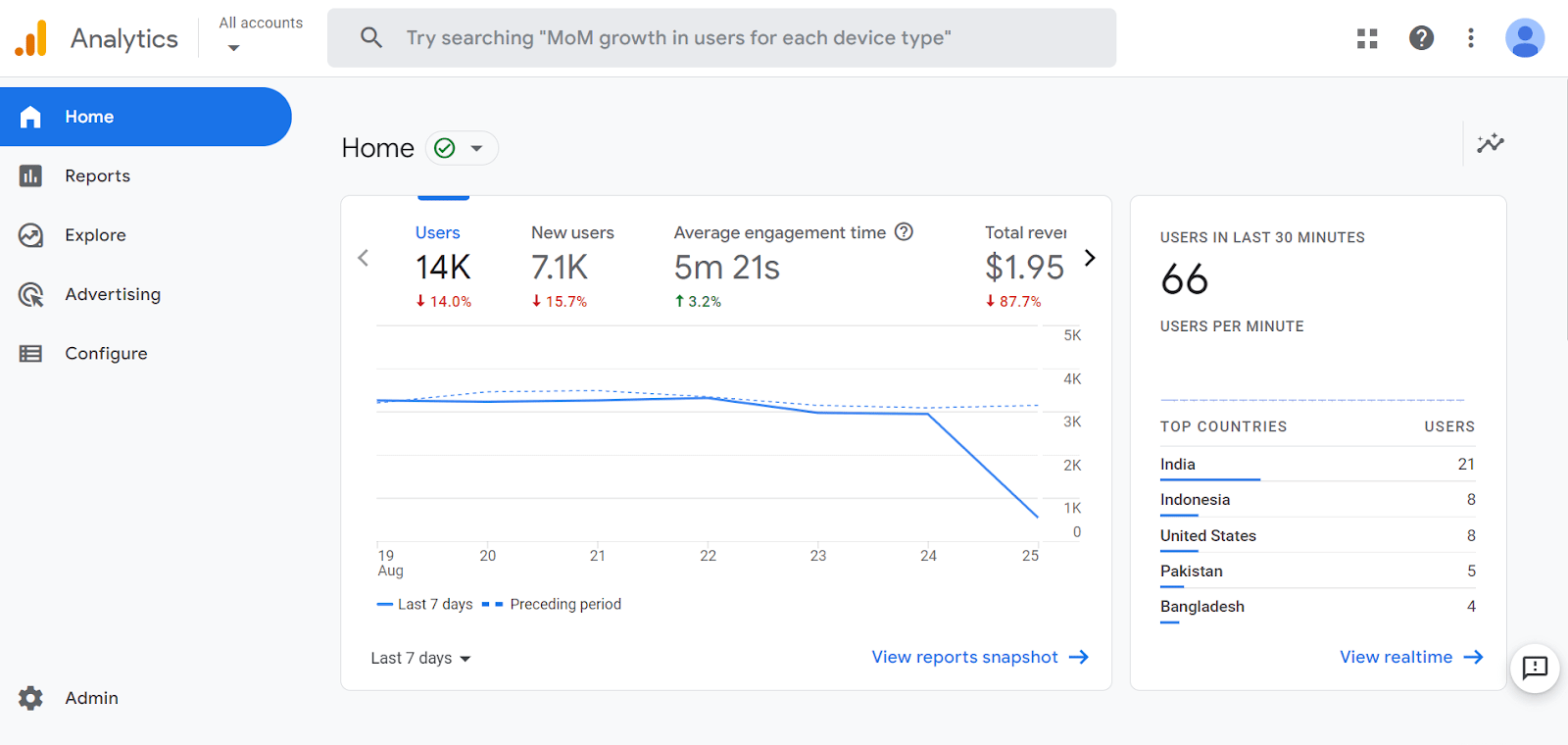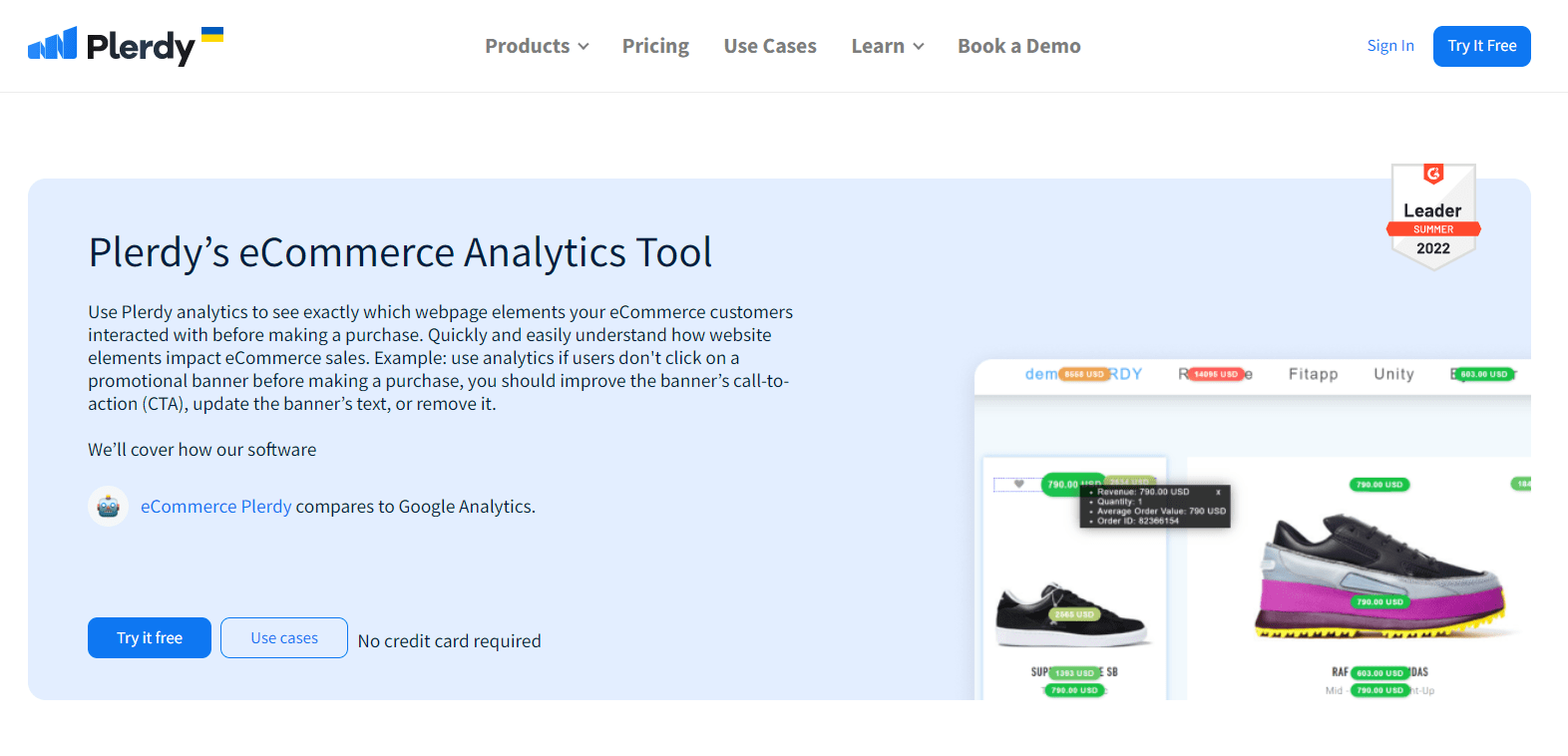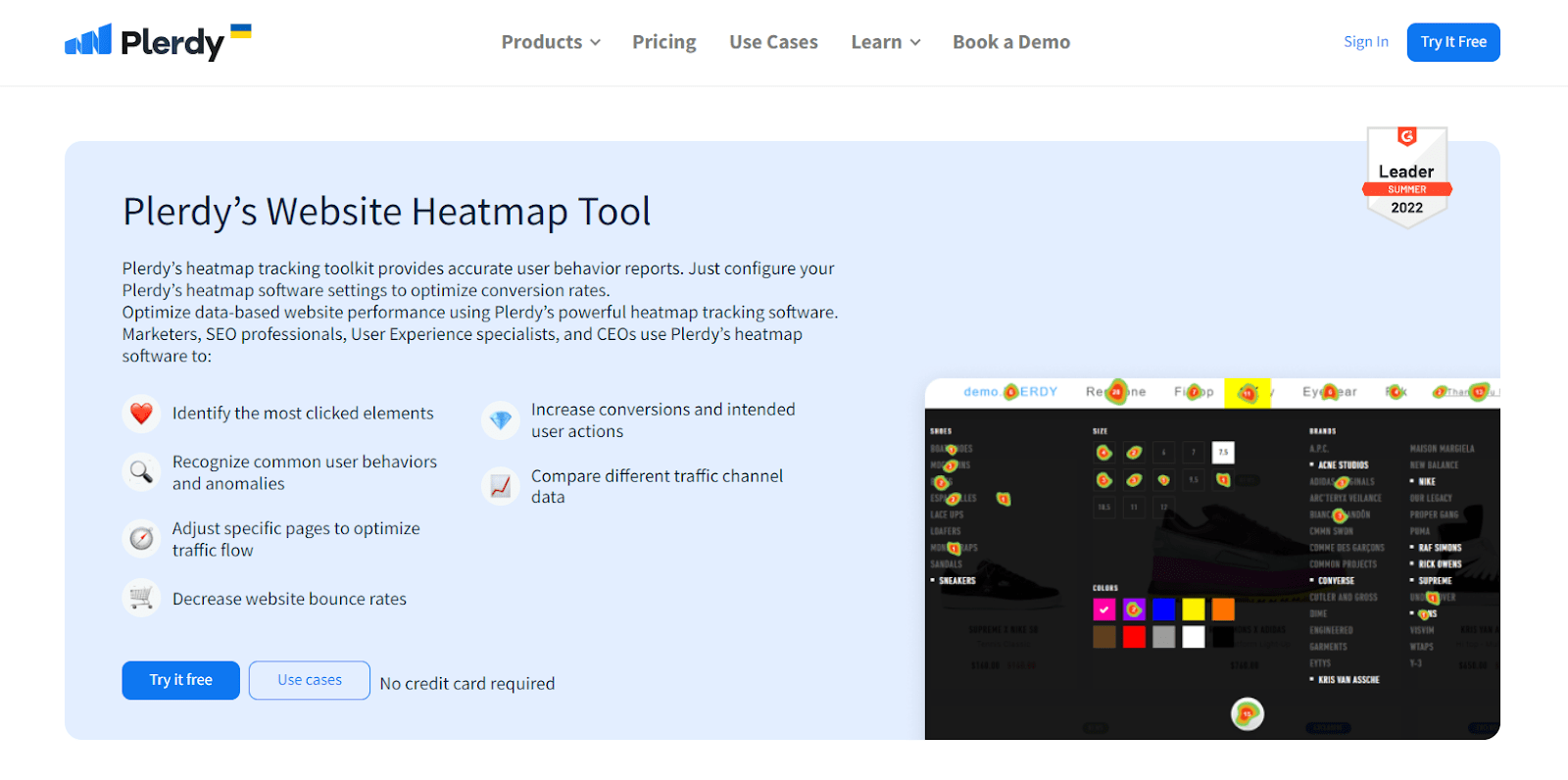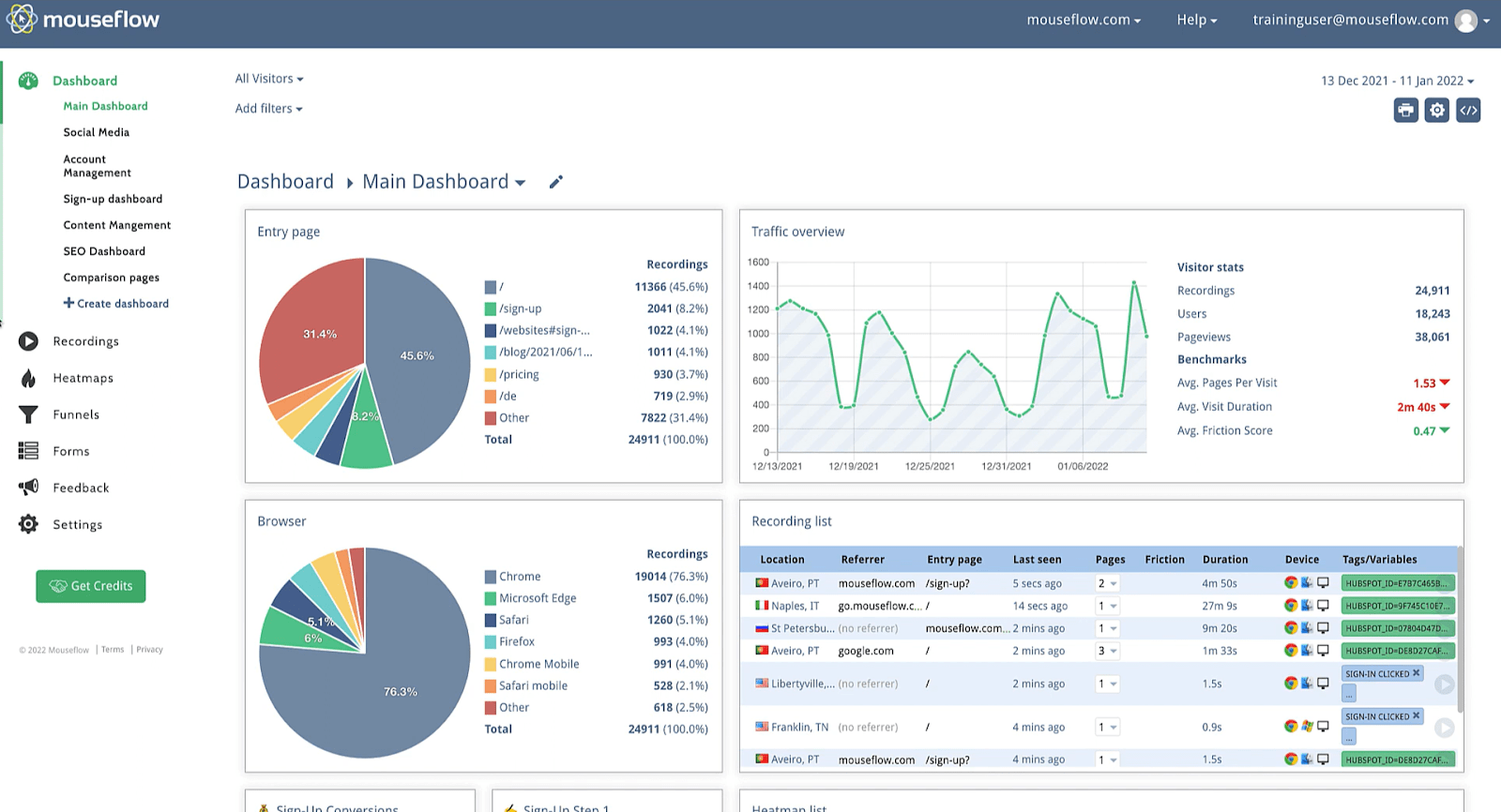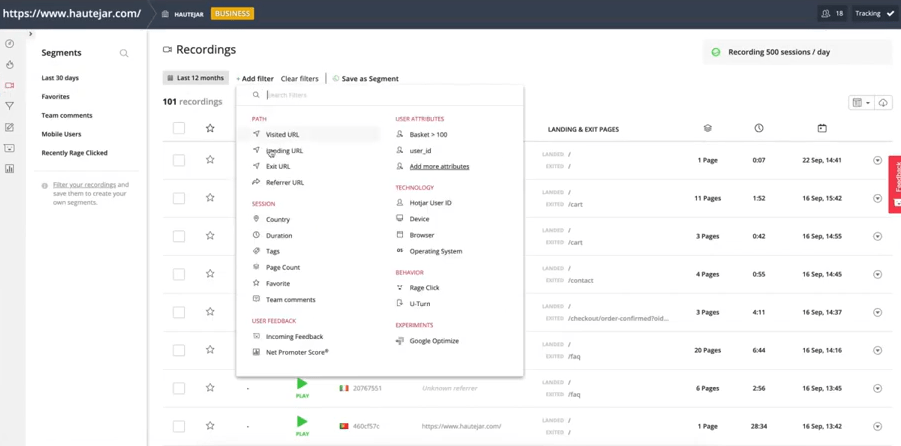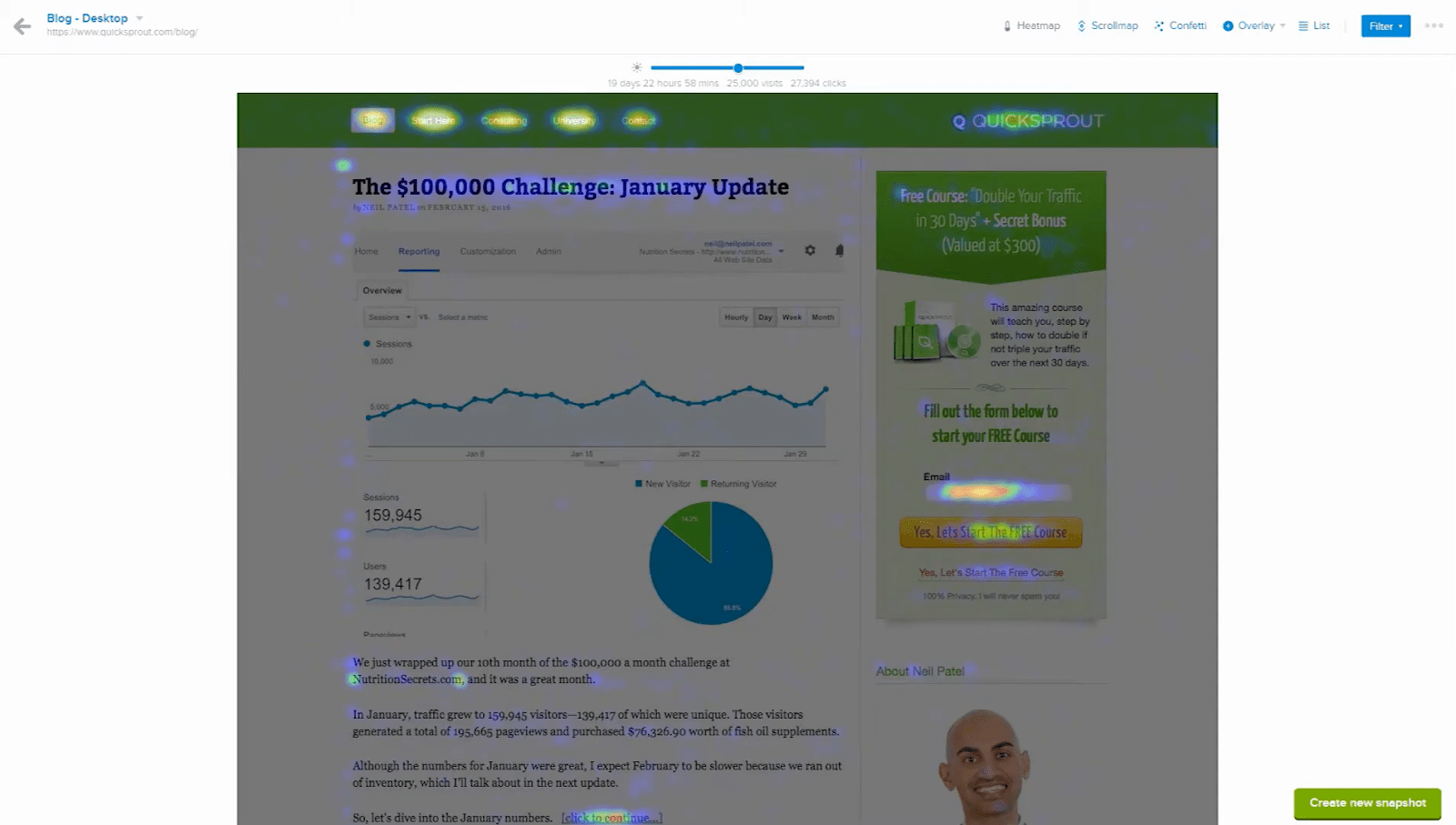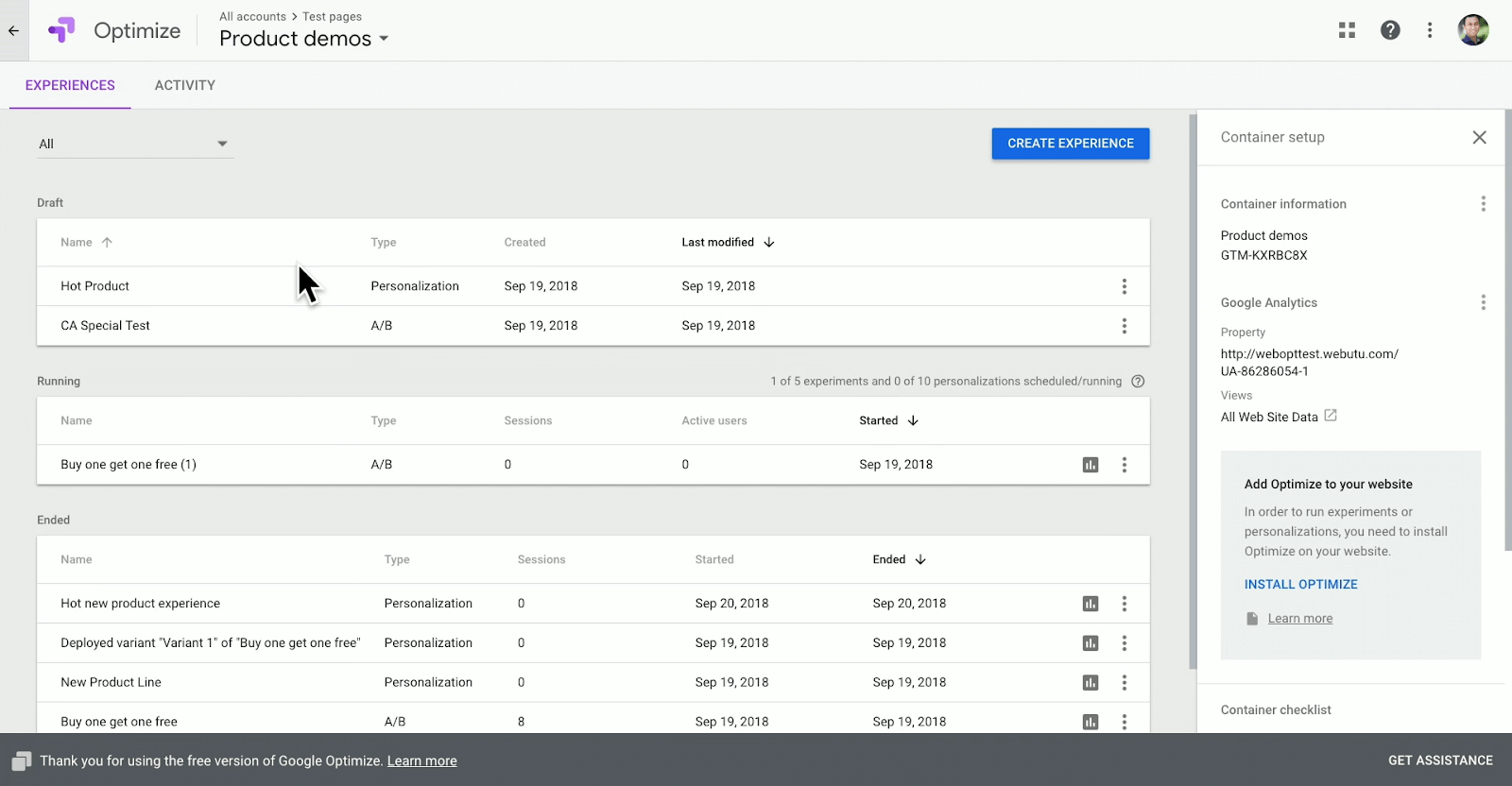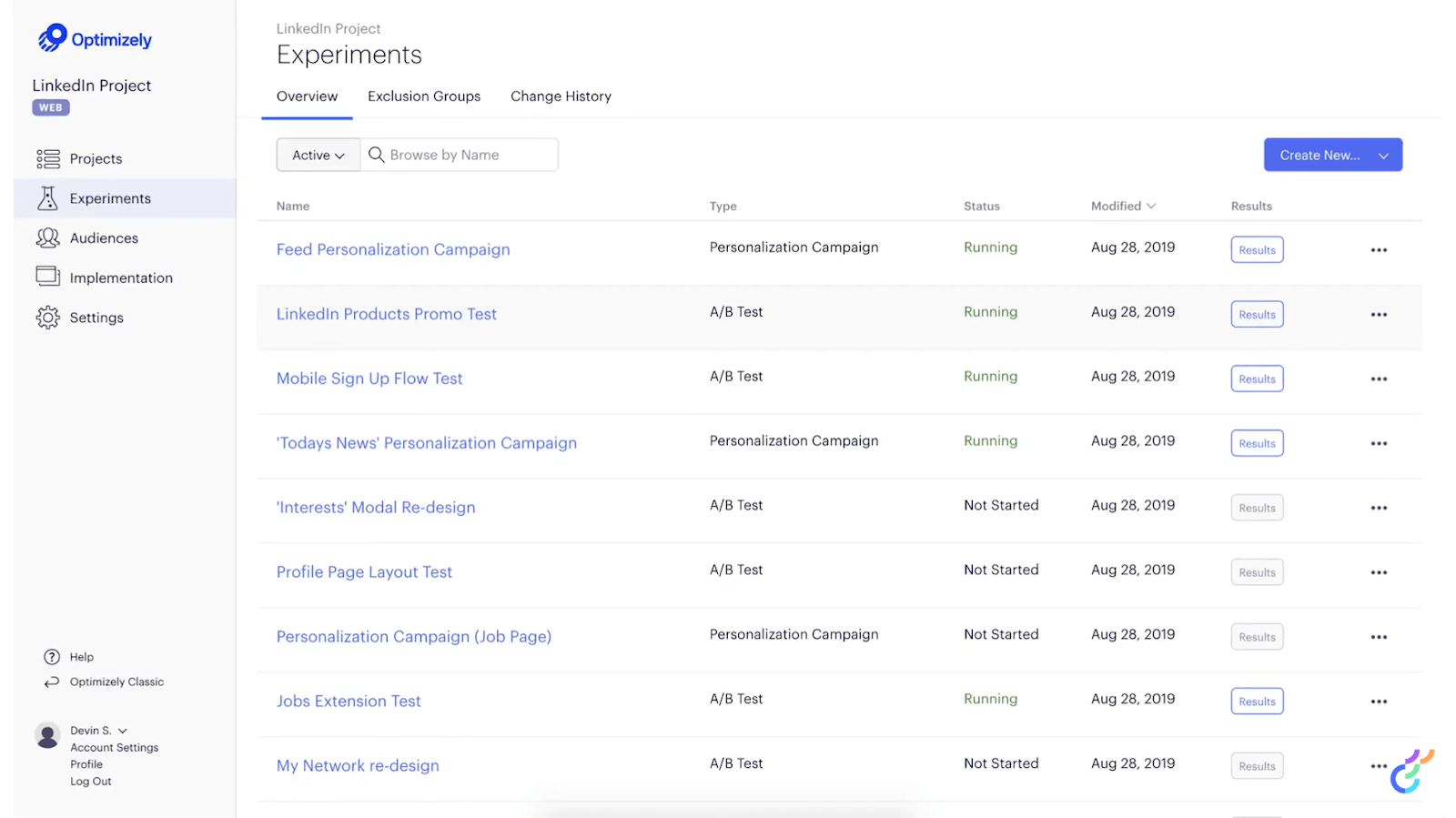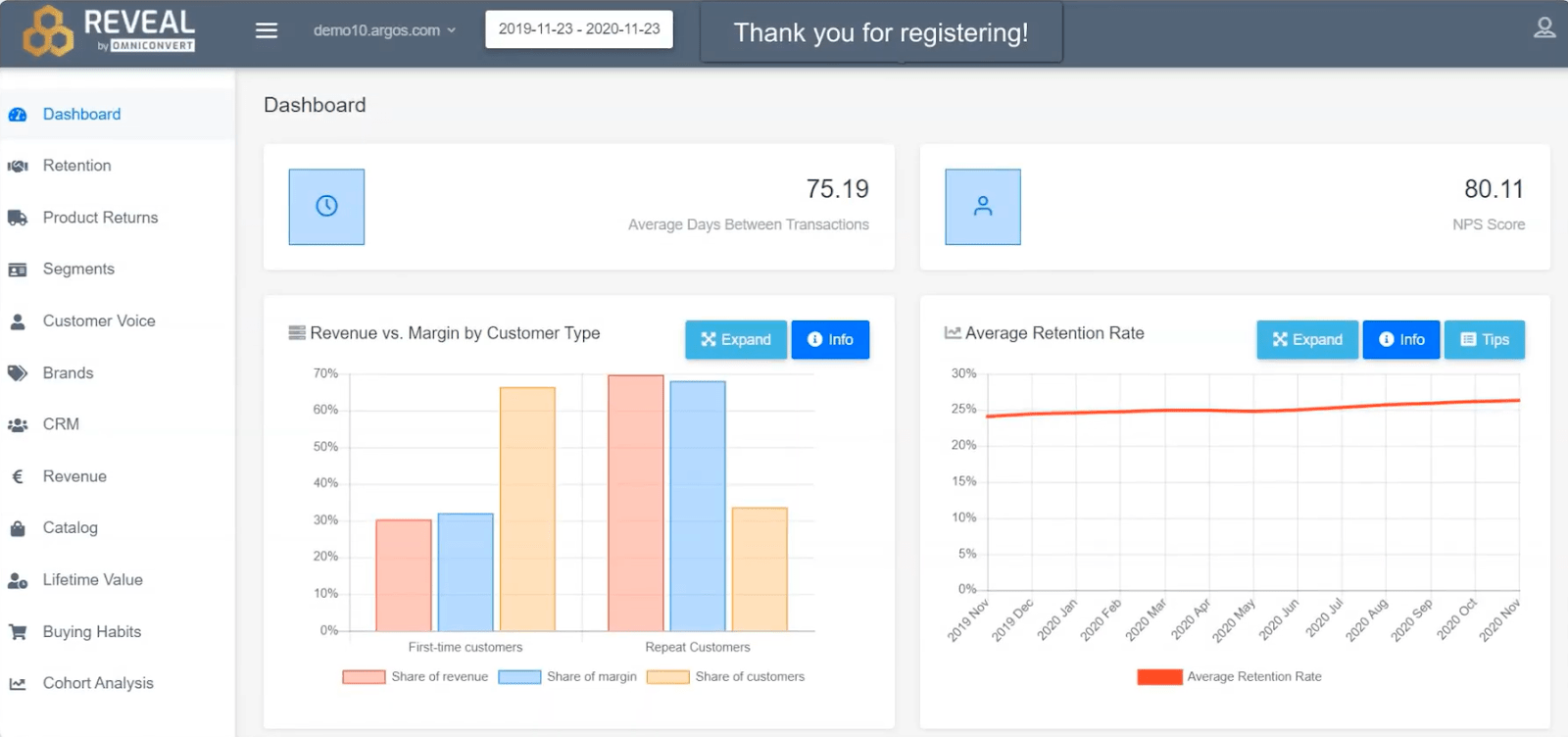Maximizing Conversion Rates: The Vital Role of CRO Tools in Optimization Strategies
Сonversion Rate Optimization (CRO) deals with various tasks, such as sales funnel optimization, decreasing bounce rate, and cart/checkout abandonment rate. CRO recommendations taken from the most effective tools, including heatmaps and A/B testing software, can increase conversions, and help retain customers.
Almost 69 percent of companies indicated that they’d increase the priority of CRO activities compared to last year. According to their internal research, the VentureBeat report insights have become a powerful argument for businesses since the average ROI from CRO is more than 200 percent.
So CRO is hyped now. And the integral part in CRO strategies is the use of analytics tools, since they provide valuable insights into website visitor behavior, help identify areas of improvement, and measure the effectiveness of optimization strategies.
Analytics is crucial for eCommerce CRO since it allows:
- 1️⃣ Understanding customer behavior: how customers interact with a website, what pages they visit, how long they stay on each page, what products they view, and what products they add to their cart;
- 2️⃣ Identifying areas for improvement: tracking metrics such as bounce rates, exit rates, and time on page;
- 3️⃣ Measuring marketing effectiveness: checking the success of email marketing campaigns, social media advertising, and pay-per-click campaigns;
- 4️⃣ A/B testing: figuring out which version of a page performs better in terms of conversions;
- 5️⃣ Planning for the future: identifying opportunities for growth and making informed decisions about key business functions.
So let’s check tools that can help you increase conversions and figure out what software to use on different stages of optimization strategies.
Top eCommerce Analytics Tools for CRO Marketing
In this section, we’ll look at tools that allow conducting an in-depth audit and split tests.
Must-Have Conversion Rate Optimization Software
Google Analytics
You are most likely using this essential and must-have tool for website analytics for now, but still, it contains so many features that you might be interested in as well.
Our recommendation is the Advanced Google Analytics course, which will allow you to master filters, data analysis by channel and audience, and targeting with dynamic remarketing.
During the CRO initial audit delivery, we typically use Google Analytics for analyzing:
- ✅ User behavior and bounce rate on mobile devices for the website as a whole and critical landing pages compared to the desktop;
- ✅ Website speed and page load times;
- ✅ Horizontal funnel eCommerce reports;
- ✅ On-site search;
- ✅ Conversions by the acquisition source or medium.
Plerdy’s eCommerce Analytics Tool
With this tool, you can gain insight into the specific webpage elements that your eCommerce customers engage with before making a purchase, and easily determine how these elements impact sales. For instance, if users fail to click on a promotional banner before completing a purchase, the analytics data suggests that you may need to improve the banner’s CTA, revise its messaging, or consider removing it altogether.
With this tool, businesses can check the vital factors that influence conversions, including page views, page depth, conversion rate over time, average cost per order, total online profit, sales over time and more.
Plerdy’s eCommerce Analytics Tool is a decent competitor to Google Analytics.
Heatmaps Software
Heatmap software is a tool that visually displays website user behavior through color-coded maps of website pages. It helps website owners to understand which areas of a website receive the most engagement and which areas are ignored, providing the possibility to optimize their website for better user experience and increased conversions.
Plerdy’s Website Heatmap Tool
Plerdy’s Website Heatmap Tool helps to track user clicks, scroll depth, and cursor movement on web pages and display the data in a color-coded heatmap format.
The tool also offers the ability to filter heatmaps by traffic source and device type, making it easy to identify behavioral differences between desktop and mobile users or traffic coming from different sources. Additionally, Plerdy’s heatmaps are updated in real-time, allowing website owners to make changes and see the impact immediately.
The tool combines all the benefits and features necessary for CRO, including:
- ✔️ Scroll and heatmaps with all user clicks recorded and displayed in real-time;
- ✔️ User session recording and replay;
- ✔️ Completely customizable pop-ups;
- ✔️ Conversion funnel visualization;
- ✔️ NPS (Net Promoter Score) for customer feedback collection;
- ✔️ Synchronizing and tracking events with your Google Tag Manager and Analytics.
Mouseflow Website Heatmap Tool
The tool’s functionality covers five main aspects: user session replays, heatmaps, sales funnel visualization, web forms analytics, and customer feedback analysis.
Mouseflow also offers session replays, which allow website owners to watch recordings of individual user sessions. This can be helpful for understanding the context of user behavior, such as what led up to a particular click or how a user navigated through a website.
Additionally, Mouseflow offers conversion funnels, which allow website owners to track user behavior through a specific series of steps, such as a checkout process or form completion.
Particular attention should be paid to user session replays since this feature allows tracking clicks, mouse movements, scrolls, and interactions with web forms. Understanding what part of the landing page and what elements attract users will help you strategically place buttons and call-to-actions in the future.
HotJar
Hotjar is considered one of our customers’ most popular CRO tools and the most installed CRO software. It is an all-in-one solution for quantitative data collection, like heatmaps, video recordings, heatmaps, and scroll depth tracking.
HotJar offers several types of heatmaps, including click, move, and scroll heatmaps. Click heatmaps show where users are clicking the most, while move heatmaps show where the mouse cursor is moving. Scroll heatmaps indicate how far down the page users are scrolling and how long they spend on each section.
We love Hotjar’s user-friendly and easy-to-use interface with great filtering options. Hotjar also has a basic free version with limited functionality, up to 35 sessions/day.
Crazy Egg
One of the market’s most trustworthy and reliable tools is popular among giants, such as Zendesk, Etsy, and Dell.
Crazy Egg has a positioning of an all-in-one growth marketing tool but is mainly valued by CRO experts for its heatmaps, visual dashboards, and user session recordings. Unlike alternative solutions, this tool also has an A/B testing functionality with the ability to quickly and easily set up without the involvement of developers.
No matter what your goals are, either reducing shopping cart abandonment or increasing leads/sales, this tool should be on your list. If you are not ready to invest in the tool yet, try a free trial that they provide for 30 days.
Heatmaps Software Comparison
| Criteria | Plerdy | Mouseflow | Hotjar | Crazy Egg |
|---|---|---|---|---|
| Price range | Free–$79/m | Free–$299/m | Free–$389/m | $29–Custom |
| Most popular pricing plan | $47/m | $79/m | $99/m | $99/m |
| Custom behavior targeting | ✅ | ❌ | ❌ | ❌ |
| User interactions in real time | ✅ | ❌ | ❌ | ✅ |
| GDPR compliance | ✅ | ❌ | ❌ | ❌ |
| User sessions recordings | ✅ | ✅ | ✅ | ✅ |
| Forms & fields testing | ✅ | ✅ | ✅ | ✅ |
| Customer feedback collection | ✅ | ✅ | ✅ | ❌ |
| Errors & bugs detection in JavaScript | ❌ | ✅ | ✅ | ❌ |
| Sharing with the team option | ✅ | ❌ | ❌ | ❌ |
| A/B testing | ❌ | ❌ | ❌ | ✅ |
A/B Testing Software
Google Optimize
We classified this tool as a split testing software. Still, Google Optimize positions itself as a website personalization and testing solution, being actually an extension of Google Analytics.
Based on our internal experience working with the tools, we should say that Google Optimize is basic for hypothesis testing without involving a development team. A/B testing, multiple variables testing, and redirect testing are all possible within this solution.
Optimizely Experiment
The solution offers a whole set of technologies and features like AI-based personalization and experiments for multivariate, server-side, and A/B tests.
Well-known brands such as Zara, Marc Jacobs, Steve Madden, Massimo Dutti, Fitbit, Dr. Martens, and Balenciaga also choose this tool in order to outperform their competitors.
Omniconvert
Omniconvert is an advanced experimentation tool designed for agencies, development and product teams, and marketers seeking to launch advanced experiments without relying heavily on their IT department.
The platform offers a wide range of capabilities, including A/B testing, advanced reporting capabilities, including Bayesian and Frequentist statistics, on-site surveys. The solution can be easily integrated with Google Analytics, Hotjar, Zapier, Hubspot, Marketo, Salesforce, etc.
A/B Testing Software Comparison
| Criteria | Google Optimize | Optimizely | Omniconvert |
|---|---|---|---|
| Price range | Free–Custom | Free–Custom | $273/m–Custom |
| Most popular pricing plan | Free | Free | $273/m |
| Visual user-friendly editor | ✅ | ✅ | ✅ |
| Split resting | ✅ | ✅ | ✅ |
| Heatmaps & click maps | ✅ | ✅ | ❌ |
| Test scheduling | ✅ | ✅ | ✅ |
| Multiple variables testing | ✅ | ✅ | ❌ |
| Audience targeting | ✅ | ✅ | ✅ |
| Webforms/popups for landing pages | ✅ | ✅ | ❌ |
| Surveys functionality | ❌ | ❌ | ✅ |
Steps of CRO in Online Marketing and Tools for Them
We learned about eight amazing tools for analytics that can dramatically improve your conversions when used wisely. And by “wisely” we mean using it at the right time during optimization. So let’s see at what stage what tools are the best choice.
Step #1: Discovery
Conduct a thorough analysis of the website data to identify bottlenecks that prevent conversions. At this stage, Google Analytics data will be enough — pay special attention to those pages with the highest bounce rates.
This step results in a list of bottlenecks, ideas on eliminating them, and clear, specific, and measurable goals.
Tools to use: Google Analytics, Plerdy’s eCommerce Analytics Tool
Step #2: In-Depth Customer Data Research
Identify the most critical bottlenecks that prevent achieving KPIs based on customer data and internal research. Here you can use the whole toolset for CRO, such as heatmaps, scroll and click maps, user session recordings, and write down all your observations as you go.
Tools to use: Google Analytics, Plerdy’s eCommerce Analytics Tool, Hotjar, Google Optimize, Plerdy’s Website Heatmap Tool, Optimizely, Omniconvert, Crazy Egg, Mouseflow
Step #3: Competitor & Benchmarking Analysis
Explore your competitors’ websites in terms of usability and user experience by taking a customer journey and the whole path of user interactions with a brand. Make sure to write down all the observations and features you like from the customer’s point of view to use something similar on your website. If you want to discover more competitors to research, use SEMRush, Ahrefs, or Similarweb.
In addition to competitors, analyze how industry leaders deal with the same tasks in terms of conversion optimization. For instance, we recommend regularly reviewing Baymard Institute’s latest research for helpful insights and valuable ideas.
For example, you can look at their large-scale research studies on how to optimize the user experience for different websites, including:
- ✔️ Apparel eCommerce
- ✔️ Home & Hardware
- ✔️ Health & Beauty
- ✔️ Electronics & Office
- ✔️ Luxury Goods & High-End Fashion
- ✔️ Online Grocery
Tools to use: SEMRush, Ahrefs, Similarweb, Baymard Institute
Step #4: Wireframes Creation
Next, it’s high time to implement your ideas based on the research from the previous stages and visually show the before and after. Take your wireframes in Figma as an instance and make necessary changes, such as introducing the ‘Guest’ option on the checkout page or placing a product suggestions block on the shopping cart page.
Tools to use: Figma
Step #5: Supervision over the Implementation
After the wireframes are ready, let’s move on to implementing and controlling the web designer’s UI so that the layout matches the wireframes and has all the necessary attributes. Finally, you can implement updated wireframes in the code and bring them to the final stage.
Step #6: A/B testing
After the final implementation of the changes on the website, you can already collect a list of hypotheses for A/B testing and validate their effectiveness.
Tools to use: Hotjar, Google Optimize, Plerdy, Optimizely, Omniconvert, Crazy Egg
FAQ: How Long Should You Let Your Conversion Optimization Experiments Run
It’s probably one of the most frequently asked questions from our clients.
First, it’s incredibly challenging to indicate a specific period since everything depends on several factors, one of which is traffic. The more traffic you attract to the website, the more accurate data you will get at the output.
Based on our experience working on eCommerce businesses in different niches, the process takes at least 1-2 weeks, closer to 4 weeks.
Conclusion: How We Mastered Conversion Rate Optimization Best Practices
Optimizing conversion rates is a constantly evolving process, which means that you need to experiment with a set of techniques and tools all the time.
However, we mastered our work with CRO. We often face common issues when working on projects, such as decreased conversion rate on product pages/checkout, high checkout abandonment rate, high bounce rate, low session duration, and low customer retention. We resolve any CRO challenge with a common sense, scientific approach and rock-solid tools. Depending on the case, we can use different analytics software. However, the process is time-tested, and we want to share it with you:
- 1️⃣ We identify 10-15 critical points of conversion growth (bottlenecks that reduce engagement and purchase abandonments).
- 2️⃣ In every recommendation, we elaborate on the problem, why it occurs, why you should change it and potential impact of solving the problem.
- 3️⃣ Each change is also argued based on solutions from direct competitors and foreign analogs.
- 4️⃣ Recommendations to be followed (where possible) by ready-made references or prototypes.
After implementing the recommendations, the site will be adaptive to different screens, have better navigation, contain the information accessible for understanding, display better product value for the target audience. All of that contributes to higher conversion rates.
If you feel this is an important and urgent task for you and your team, but there are no resources for it right now, no worries. You can contact us anytime, and we’ll be more than happy to help in any format you’d like — a full-service offering or your team mentoring and guidance.
Want to maximize your online store’s conversion rates?
Share your contact details, and we’ll be ready to help you ASAP
